As I prepared to launch Kingfisher and looked at the water on the ramp, I ran into my neighbor Yogi, and commented “Plenty of water there”. He exclaimed “But there is no wind. Look at the flag!” I did not look at the massive flagpole behind the landing. Instead my eye noticed the signs on the water, ones which reassured me of the marine forecast and my sail plan. Before I shoved off from the dock, I held on for a snowbird (large sloop) to pass on their voyage south, and cast off, the wind filling the sail as the passage to Bull Island began. I imagined the huge flag was swaying.
It was a smooth and dry sail over to the island as I headed south through Anderson Creek prior to joining the ferry passage, passing an osprey, egrets, dolphins, and an oystercatcher flying and pooping astern. I made the dock in just over an hour, greeted by Wayne Tucker, retired refuge employee. He was on the island to prepare for the first week of citizen bowhunting for deer. He gave me the heads up on mosquitoes, informing me the ferry Caretta had dropped passengers at the Northeast Point to avoid the outbreak. As I changed to long pants, he commented that was a good idea, and encouraged constant movement on the island.
It was not long after starting the walk across the island that the mosquitoes found me. I realized that I would have constant companions, and despite long sleeves and hat, any exposed skin (hands, face) was fair game. I extinguished any thoughts of a loop walk, and forged ahead on a beeline for the beach. My camera was out but I did not care to stop until the dike by the Summerhouse Pond. The first water control structure has been a reliable place to see young alligator hatchlings, and several young gators of various sizes floated in the duckweed-covered waters.
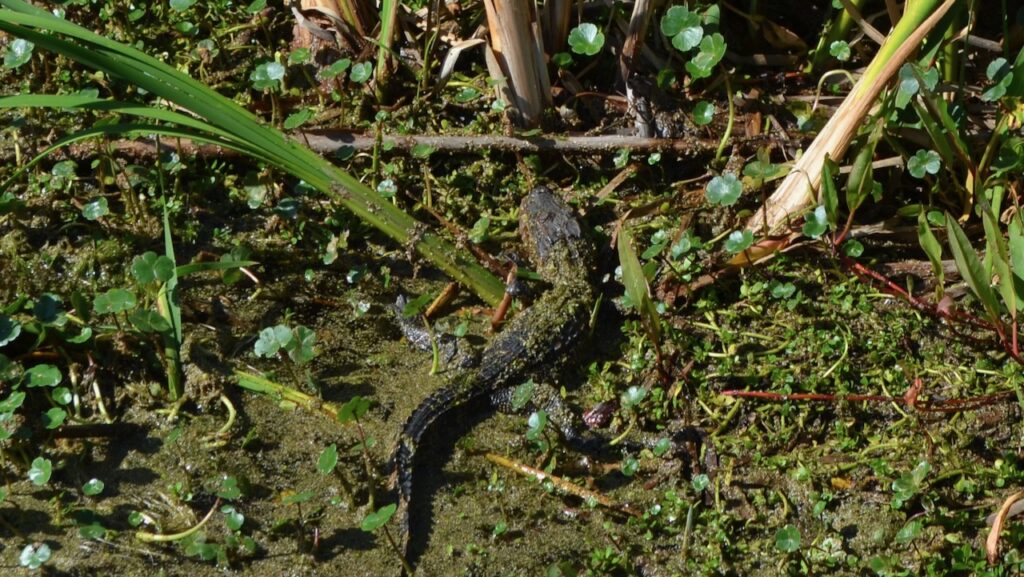
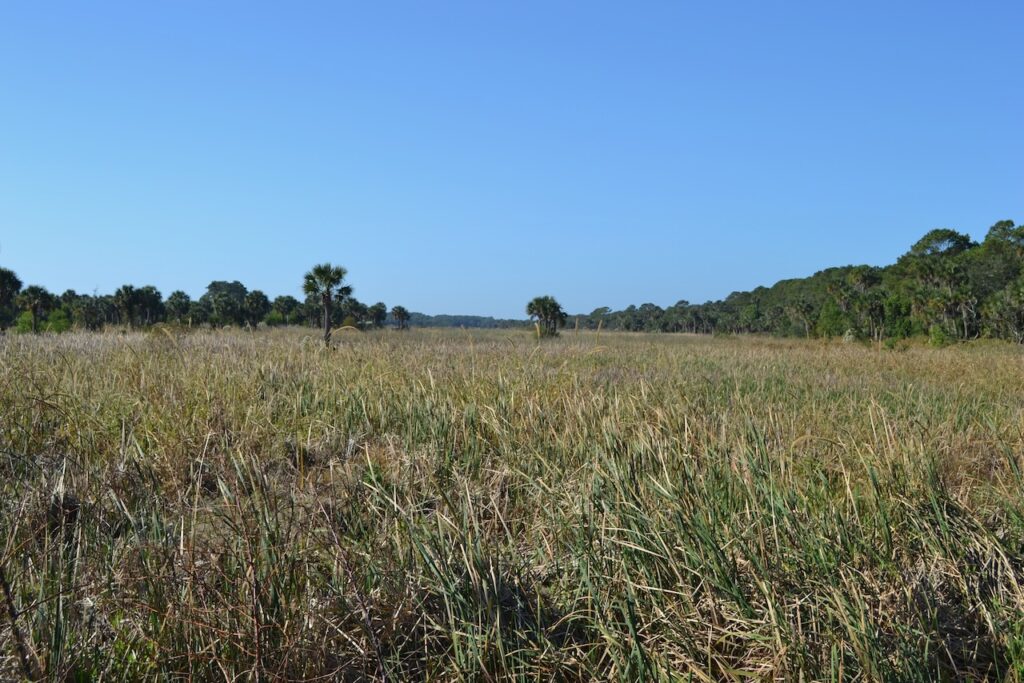
After leaving the relative calm of the dike, I ran the dense mosquito gauntlet through the maritime forest and finally reached the sanctuary of the beach. I swatted the last hangers on off me as I walked out onto the wide intertidal zone at dead low tide. Shallow pools of water laced the lower end of the beach, and beyond a light surf caressed the strand. The storm tide of Hurricane Ian had sharply scarped the sand dunes, presenting a vertical barrier on this stretch of shore for nesting loggerhead turtles next season. Pairs of gulf fritillaries glided along this edge. The openness of the beach, miles of it, was a wonderful invitation to linger.
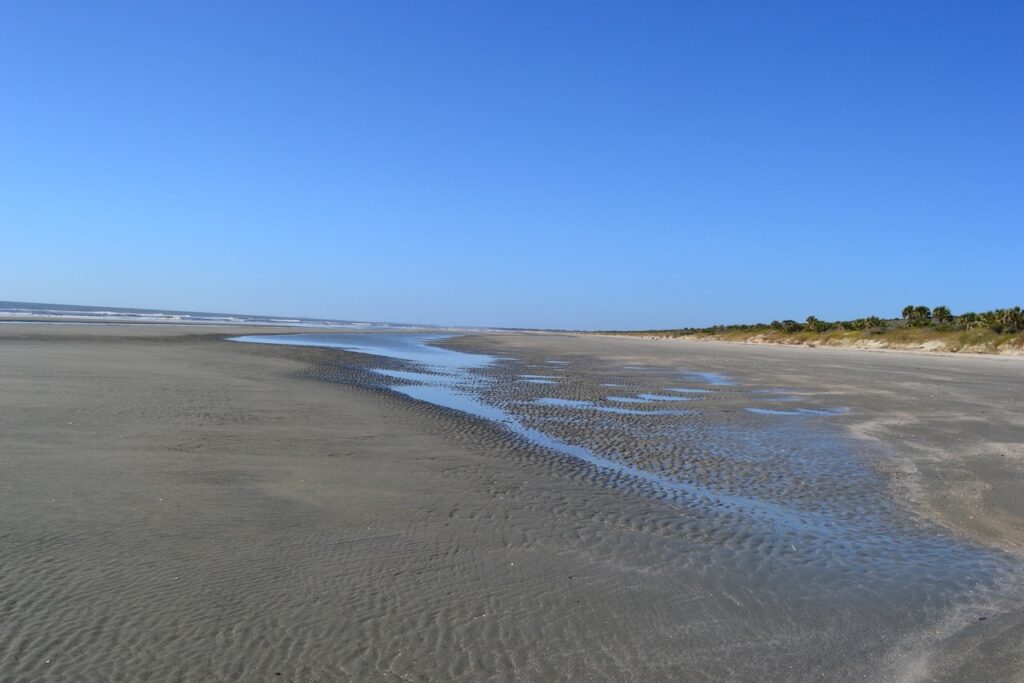
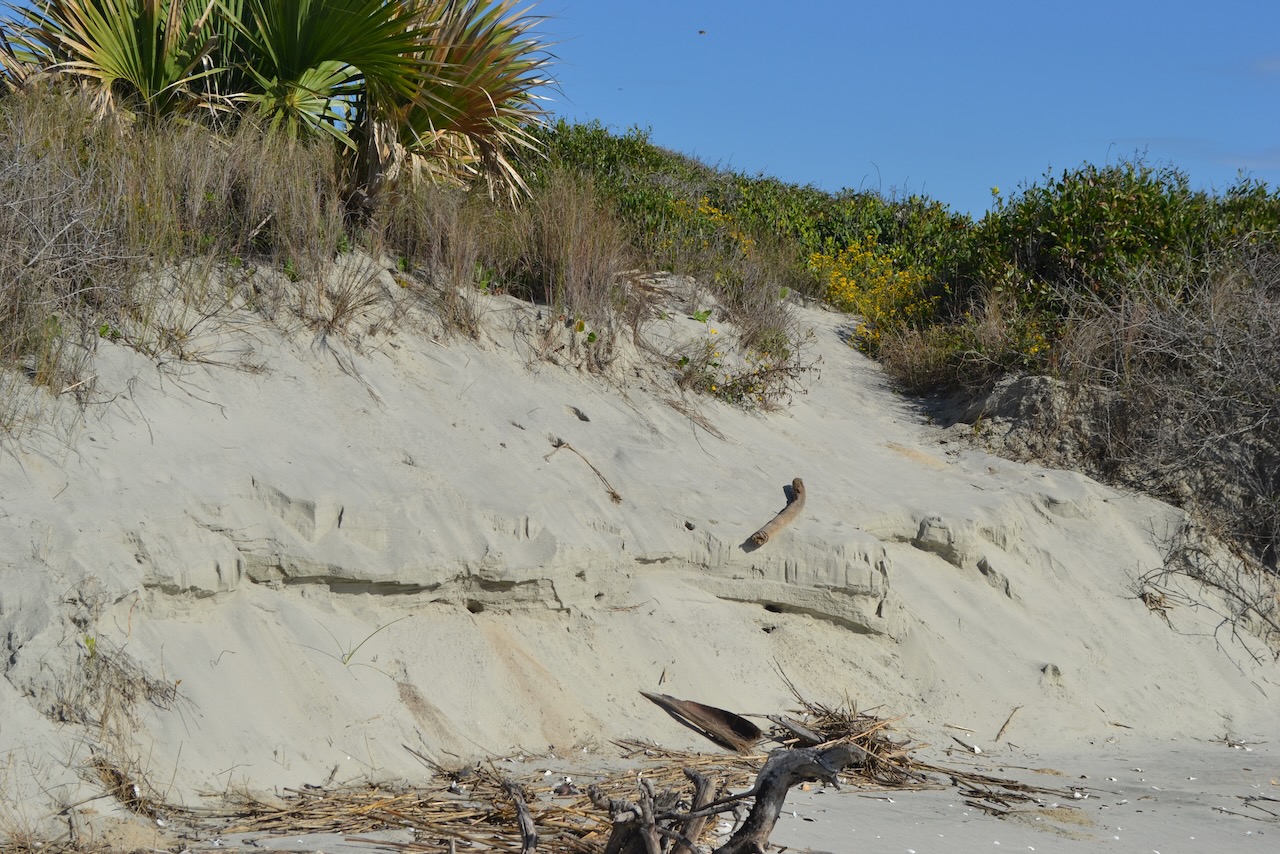
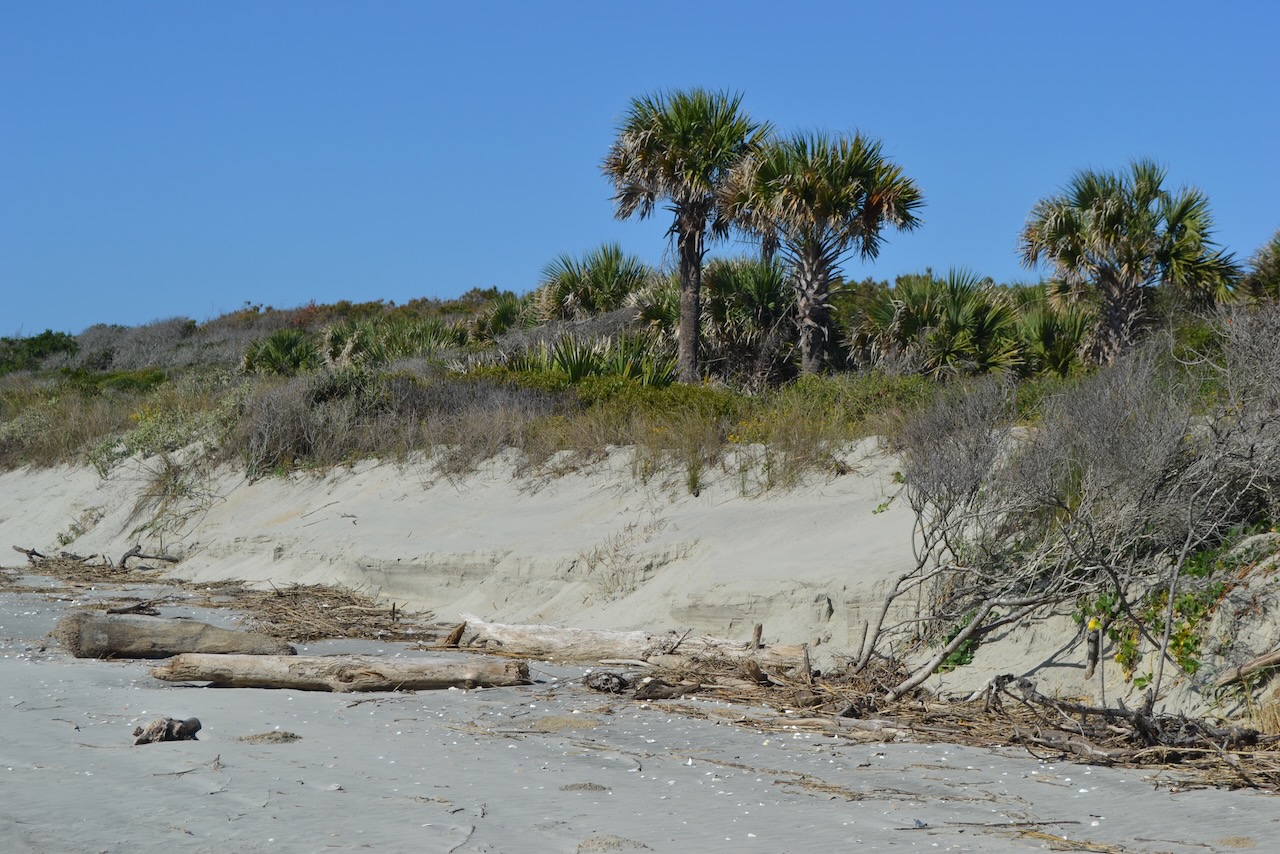
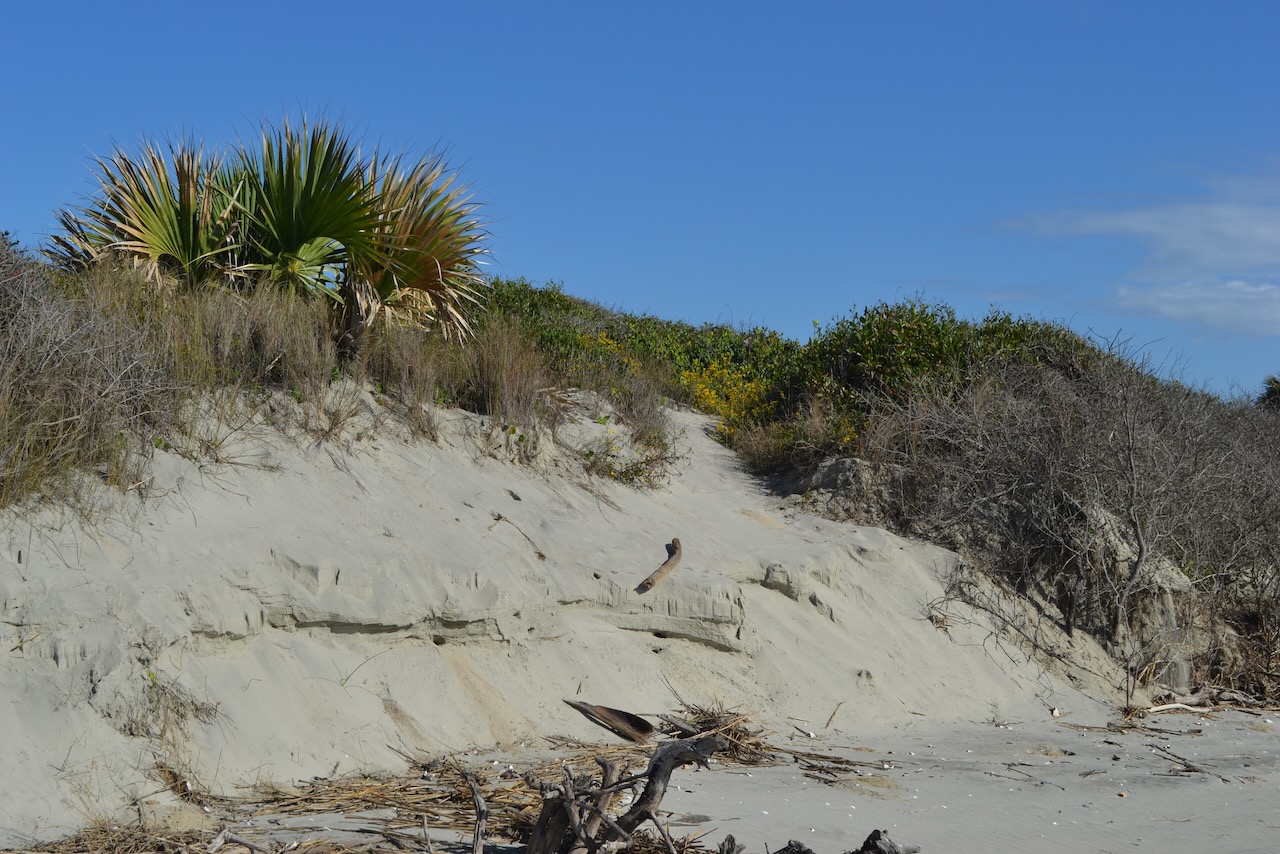
I recalled my last trip over to this island, leading a group on their inaugural trip. I had prepared them for highlights (the Boneyard, Jacks Creek, alligators, birds), but time constraints reduced the possibilities. We faced disappointments, but the island’s birds saved the day. Several pools of water behind the beach had wading birds feeding, and one contained a group of five roseate spoonbills along with wood storks easily observed from the beach without binoculars. And to top it off, a pair of bald eagles flew off from the mainland to cross over the ocean shallows before returning to the mainland, a sight our entire group, stretched out along the beach, observed. Those memories returned my view to the wonderful vista I enjoyed in the moment, views seen on many previous occasions and taken for granted.
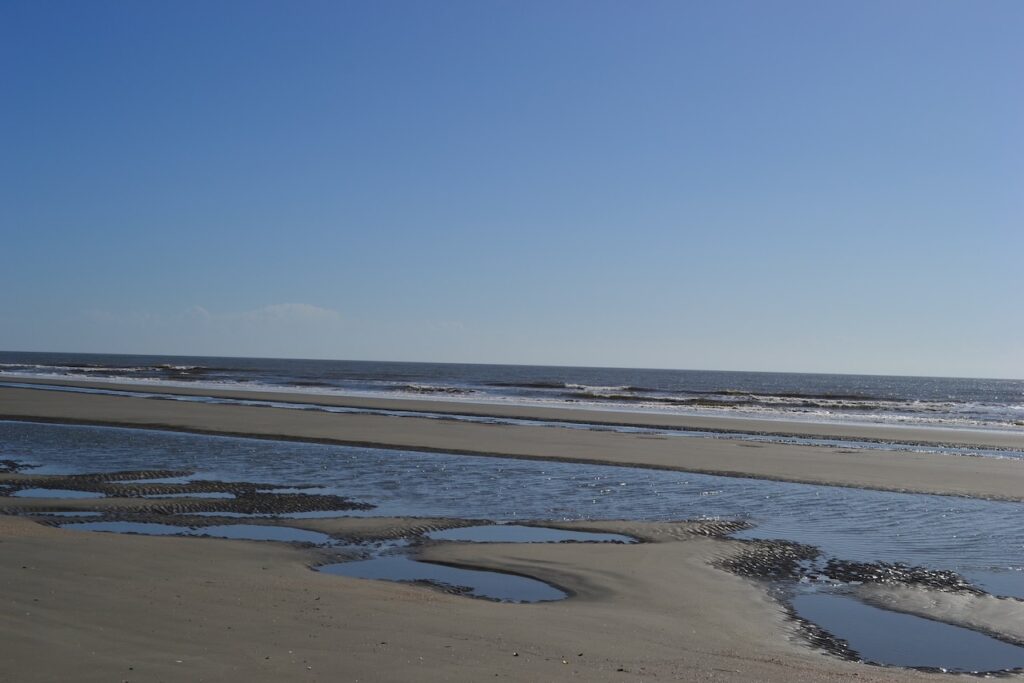
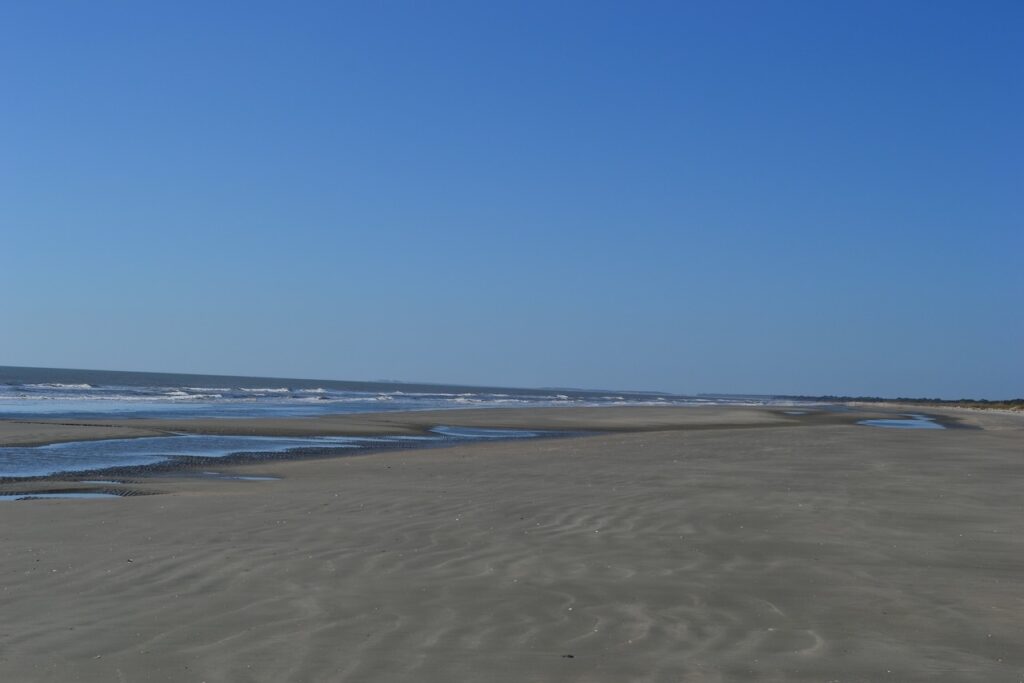
After some wandering on the strand, I added one item to my wardrobe. I put on a buff to cover my neck and a portion of my face including my ears and nose as another line of protection. Suited up, I began the walk across the island. The maritime forest sections of the walk were the most mosquito-dense, and I maintained a brisk pace. The dike had a bit of wind but not enough to disperse all the biting insects away, but enough to stop and view a sea myrtle with its strange fruit, the white achenes. I would find sanctuary again at the dock and sailing home through the Cape Romain marshes.
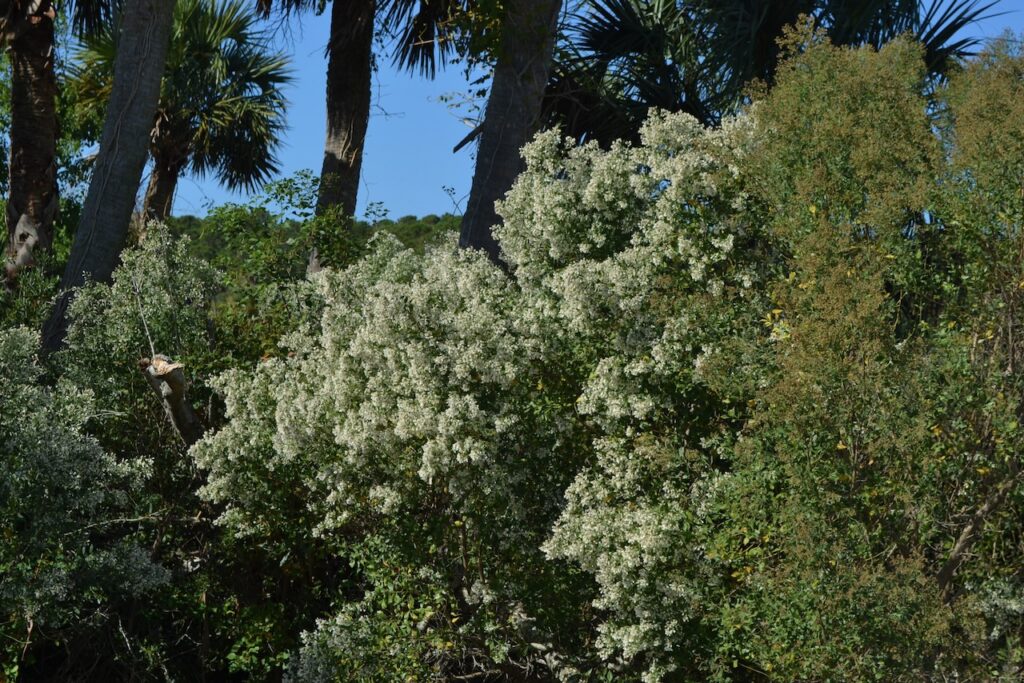
Back at the dock I chatted with the crew of Caretta. During this brief conversation a couple of dolphins breached further up the creek. I left the island earlier than planned – I did not want to lose the wind, and tacking out of Summerhouse Creek to bear off in Bull Creek on the passage home was a great start. Along the way two dolphins swimming side by side passed me heading in the opposite direction, and one of them turned to perhaps take a closer look. After some turns in the creeks I came to a straight section where the tide opposed our course, but the moderate wind continued to provide for fine windward progress.
Past the Shark Hole at the major fork of Anderson Creek, I bore off to the freedom of joining the incoming tide and reaching across the wind. I was on a quick passage to the landing. As I approached the Intracoastal Waterway, I noted a snowbird coming, but my position would take me in before his arrival. As I reached across the Waterway the huge flag behind the landing danced a lively jig.
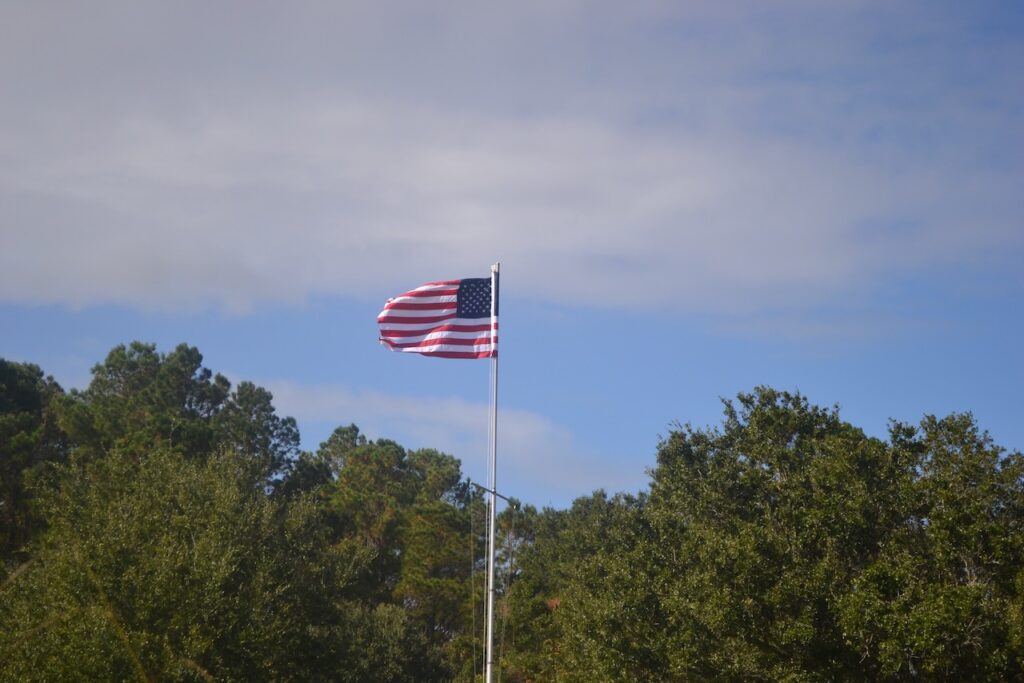
Lovely essay, Bob. I can picture it and almost feel it with you! By the title, I wondered if there would be some election day politics about a flag moving- staked ground or something like that. I am glad no politics were mentioned!
I saved the political statement for my vote today.
All wonderful.. as always. Especially liked the last photo. G
Don’t you love a dancing flag?
Agree with others….your writing style brings me right to the island. Always a siren to return, always a pleasure.
As always, thanks for sharing your photos and adventures. Did the island get much damage from the recent tropical storms and, if so, do they rebound quickly, naturally, or require assist from DNR? Just curious, do you use mosquito repellent or do the swarms ignore it.
SCDNR does not play a role in Cape Romain National Wildlife Refuge which is under the management of USFWS. TS Ian definitely ate away at the beach of Bull Island, but the CRNWR islands to the north – Cape Island, Lighthouse Island – had much more erosion. I don’t use repellent, just use clothing.